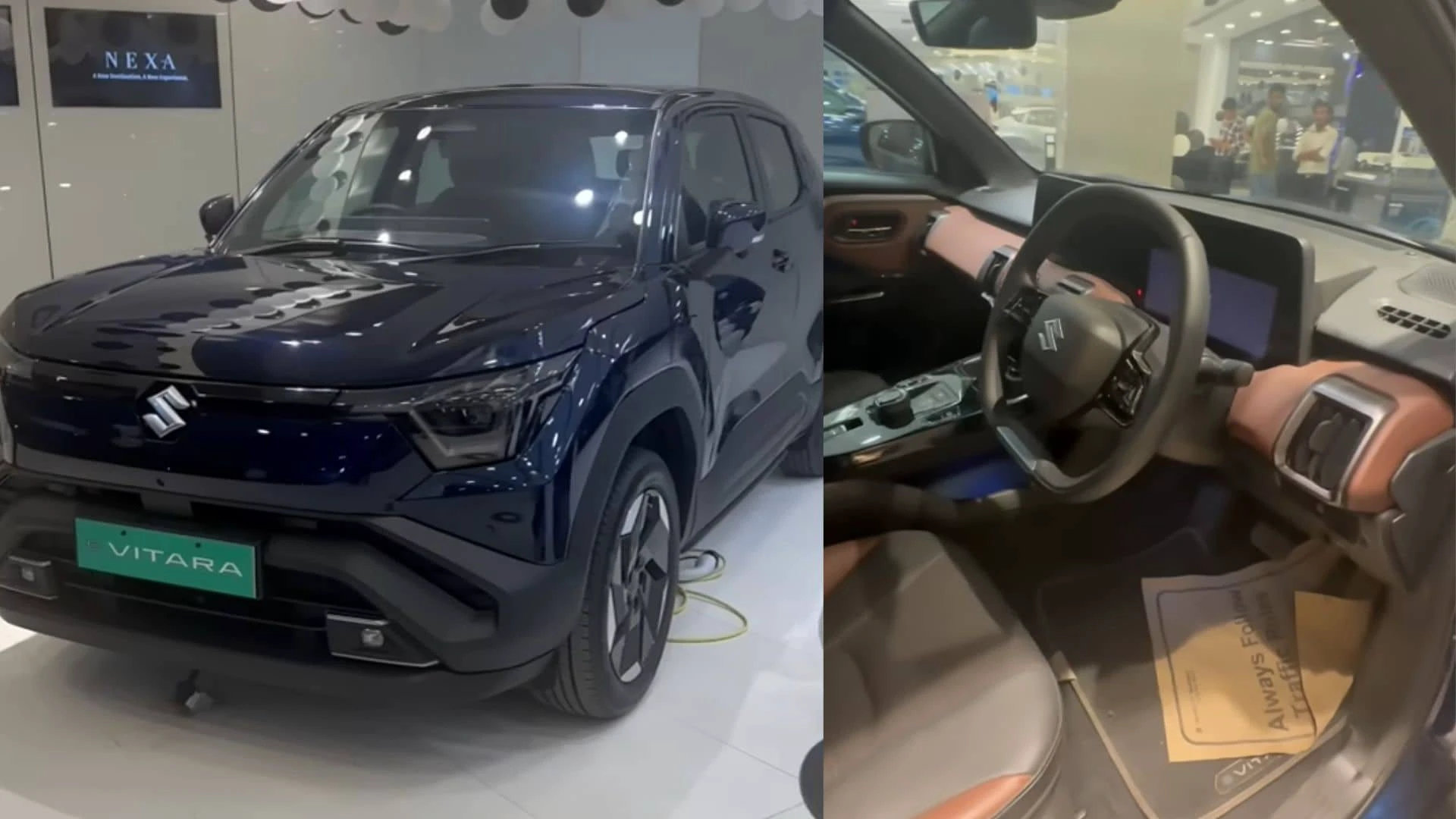The Maruti Suzuki e Vitara has been a source of multiple headlines over the last few months. Since its debut at the Bharat Mobility Global Expo, the vehicle has attracted significant attention.
The reason is, it is the first fully electric vehicle of the automaker that will go on sale in India. Furthermore, it will be manufactured in India and will be exported to other countries. Already on sale in multiple international markets, the SUV is set to launch in India in December. Before that, it had already started reaching showroom floors, and here’s all about the SUV.
Maruti Suzuki e Vitara: Design
At the dealership, the Maruti Suzuki e provides a closer look at the three-point matrix LED daytime running lights integrated into the headlight. Additionally, the eye-catching piano black accents at the center of the headlight further enhance its appeal. The rear windscreen features Nexa badging, and this is paired with 18-inch alloy wheels, sturdy C pillars, and a fresh design for the LED taillamps.
Maruti Suzuki e Vitara: Interior
Inside, the electric SUV boasts a dual-tone interior. The details reveal a new two-spoke steering wheel. In terms of technology, the electric vehicle is equipped with a 10.1-inch infotainment display and a 10.25-inch instrument panel. Furthermore, the brand has included leatherette seats and a fixed glass roof.
Maruti Suzuki e Vitara: Features
As for features, the Maruti Suzuki e Vitara includes ventilated front seats, a 10-way adjustable driver’s seat, sliding and reclining rear seats, 7 airbags, Level-2 ADAS with autonomous capabilities, a 360-degree camera, a wireless charging pad, keyless entry, a ride-by-wire system, and ambient lighting.
Maruti Suzuki e Vitara: Powertrain
The e Vitara’s powertrain offers two choices of lithium iron phosphate (LFP) batteries: a 49 kWh variant with a single-motor setup and a 61 kWh variant available in either FWD or 4WD configurations. The 49 kWh option achieves a range of up to 346 kilometers, while the 61 kWh variant provides a range of up to 428 kilometers, both estimates based on the WLTP cycle. However, it’s not confirmed if the AWD variant will be launched in India.
